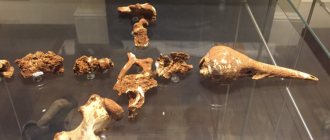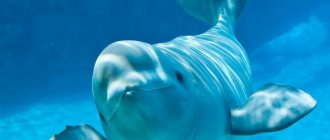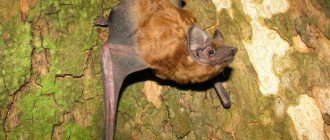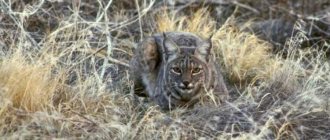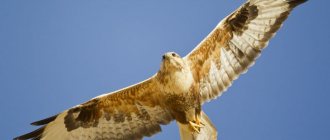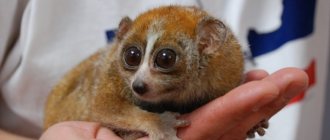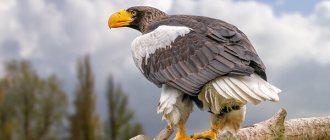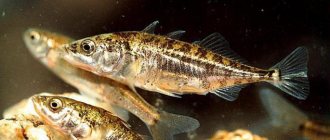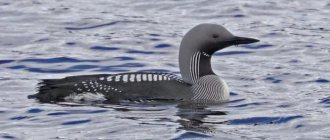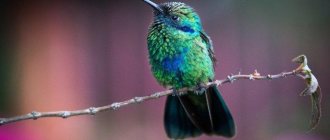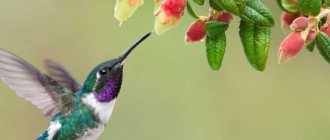- Wild animals
- >>
- Mammals
The echidna is very impressive with its appearance, since it is not immediately clear what animals it is close to.
She seems to have quills, and not a hedgehog or a porcupine, she destroys anthills, but has nothing to do with anteaters. What is truly incredible is the process of reproduction and raising the young: she lays eggs, but feeds the young with milk, although not from the nipples. It also bears babies in a pouch. She also lives on the most amazing continent - Australia. A funny thing was said about these animals: the echidna mocks scientists with its existence. Indeed, experts failed to understand much, and the echidna still arouses great interest among them. Locals also call the echidna the spiny anteater.
Origin of the species and description
Photo: Echidna
The echidna is one of the most ancient animals on our planet. She belongs to a special subclass of primordial animals. The only order here is monotremes (in another version - oviparous), which includes five species of animals. Two of them are the echidna and the proechidna of the echidna family. Three other species from the platypus family are no less interesting animals.
Echidnovae developed along a separate branch of evolution, which appeared about 180 million years ago and descended from the oldest animals on Earth - southern mammals. They found the Jurassic period and dinosaurs. Perhaps 25 million years ago, echidnas came to land from the water. They retained receptors for underwater hunting, capturing the electrical fields of moving animals. The ability to swim well on and under water has also been preserved.
The monotreme class is characterized by the excretion of the genitourinary system and intestines into one common cavity - the cloaca. This is not typical for mammals, and makes echidnas stand out among them.
The echidna has two subspecies:
- Australian;
- Tasmanian.
The main difference is in the territories occupied and the slightly larger size of the Tasmanian echidna compared to the Australian one. Sometimes the former have a larger amount of fur.
The echidna's lifestyle and behavior
The echidna is a solitary animal. She is jealous of her territory and is unlikely to allow any of her own kind into her “hunting zone.” Although the animal’s body, at first glance, is heavy and not entirely suitable for swimming, the echidna moves calmly and easily by swimming. The animal is able to swim across even a large body of water. These animals do not have permanent housing.
This baby echidna, named Bo, was found on the road, probably falling out of its mother's pouch. The photo shows him at 55 days of age.
Thanks to their acute vision, echidnas instantly notice danger and try to hide in thickets or rock cracks. Well, if the enemy overtakes the echidna where there is no natural shelter, then the animal begins to bury its body into the ground with incredible speed, leaving only its traumatic needles on the surface. Another method of defense against natural opponents is curling up into a ball. Echidnas do this when the area is too open and the soil is hard to burrow into.
Appearance and features
Photo: Echidna animal
Echidnas are small animals. Their body weight varies from two to three kilograms to five to seven kilograms. The body length usually ranges from 30 to 50 cm, but sometimes, according to some data, it can reach 70 cm. But it is quite possible that such large sizes no longer refer to echidnas, but to proechidnas - this data is not yet completely clear systematized.
The animal has a small tail, which often looks like just a small protrusion. The head is small, narrow, pointed, smoothly blending into the body. There is a long, narrow, straight, cylindrical beak-trunk, up to 75 mm in length. There are no teeth, and the mouth opens only a few millimeters. A long sticky tongue protrudes from it, to which food sticks.
Video: Echidna
There are no auricles, however, animals have excellent hearing. The echidna's sense of smell is also very developed, but its vision is not very good. Although, according to some reports, it is written that the echidna’s eyesight is sharp, but the opinions of scientists are divided on this issue. An amazing feature of echidnas is the presence of skin in the mouth equipped with recipes - electrolocators. Modern mammals, as a rule, do not have such an ability to sense the electrical fields of surrounding animals, but the echidna has retained it.
The paws are small with five toes each; at the end the toes are equipped with powerful flat claws. There is one particularly long claw on the hind legs, with which the animal itches and gets rid of parasites. The whole body is covered with coarse hair; it is shorter on the muzzle and paws. The body is also covered with hollow needles up to six centimeters long. The color of the fur is brown, black, the needles at the roots are yellow and at the ends are black, but they can be entirely yellow.
Echidnas have very developed muscles; despite such small body sizes, they are capable of seriously turning around the objects around them. Usually she does this with anthills, but there are cases when an individual that found itself in a person’s home moved apart heavy furniture.
What does the echidna animal look like?
The echidna has an unusually elongated muzzle, strong short legs with curved long claws, with the help of which it quickly digs up the ground.
Strangely, she has no teeth, but she does have a highly modified beak. Instead of teeth, the echidna has sharp small horny spines. And her unusual tongue is very long and sticky. With its help, the echidna easily catches insects.
The animal's body is flattened, its length is more than 60 centimeters, the skin is covered with short, hard spines, reminiscent of the spines of a porcupine and a hedgehog.
Where does the echidna live?
Photo: Red echidna
Echidnas prefer dense vegetation. Their habitat is most often forests, where they can hide in fallen branches and trees. Echidnas love to hide among the roots, in the recesses of rotten trunks and stumps. They can also occupy other people's burrows, which were once dug by hares or wombats. They can dig holes and bury themselves in them in case of danger or excessive anxiety. They spend the hottest hours of the day in such shelters, and at dusk they come out and begin their activity.
However, not only forests serve as their habitat; they also get along well in steppe landscapes and even in desert areas. They can settle near agricultural areas, but are embarrassed to go out to people. Of course, they are dependent on food, and if they have enough food, any terrain will do. Mountain echidnas are known to spend their sleepy hours among stones in small caves.
The only thing that echidnas do not tolerate well is changes in temperature; in extreme cold they become lethargic and can even hibernate. They do not have sweat glands and therefore have poor thermoregulation. Geographically, echidnas occupy the whole of Australia, and are also slightly distributed in New Guinea, Tasmania and the islands in Bass Strait.
What does an echidna eat?
Photo: Australian echidna
Echidnas feed on insects; it is not for nothing that one of the scientists tried to classify it as an anteater. It is ants and termites that form the basis of their diet. They easily tear apart anthills, move apart and turn over stones, and dig into the ground with their nose-trunk.
In the forest, they look for food among rotten trees, from which they can easily remove the bark with their nose or paws. There, as a rule, you can find a large number of insects. The nose helps a lot in food. They have a good sense of smell. They always look for food with its help: they can simply comb the area, tucking their trunk under mosses, fallen leaves and small branches.
Ezidnas use their sticky tongue to grab food and swallow it. At the root of the tongue there are small teeth with which the echidna grinds food. Surprisingly, they, like birds, deliberately swallow small pebbles and sand, which also later serve to grind food in the stomach. In addition to ants and termites, echidnas eat worms, slugs, small mollusks and other invertebrates.
Interesting facts about the mammal
With ants, the animal receives 70% moisture
Let's highlight a few interesting facts:
- The Australian echidna was first described in 1792 by British zoologist George Shaw. He mistakenly classified it as an anteater. Ten years later, another British scientist, Edward Home, discovered a feature in the form of just one passage and created a new order, Monotremes. By the way, this also includes the platypus.
- This mammal can be confused with its close relative, the platypus. It differs from the platypus by the presence of needles and the absence of a beak. The lifestyle and habitat are also different. Platypuses are closer in characteristics to reptiles, although they are mammals.
- This animal has special receptors on its nose that help detect electromagnetic vibrations from prey or its fellows.
- They lay eggs similarly to birds, that is, through the cloaca.
- The average life expectancy in natural conditions is 15 years. In captivity, animals become long-lived, reaching an age of 40–50 years.
- The female's milk is pink. This is due to the high iron content.
- The male's penis has as many as 4 heads.
- Capable of licking with their tongue up to 100 times per minute.
- Fleas on an animal reach a size of 4 mm.
- When temperatures drop sharply, they go into hibernation, which can last up to several months. Subcutaneous fat is used as nutrition at this time.
- The needles are so sharp that even the slightest touch can puncture or cut human skin.
- Males have spurs on their hind legs that contain a poisonous secretion. During the entire observation period, it was not observed that the males used it in any way.
- They are kept in zoos around the world, but animals do not breed in captivity.
- The brain is primitive. However, the animal is extremely curious.
- The albino echidna occurs once in ten thousand.
The echidna is an unusual and interesting animal. It can only be found in Australia and nearby islands. The animal is not dangerous to humans and, when encountered, curls up into a ball or tries to run away into the thickets. You should not pick it up, as this can cause damage to the skin due to the sharp needles.
Features of character and lifestyle
Photo: Echidna animal from Australia
Echidnas are solitary animals by nature. They do not contact each other. Echidnas prefer not to be disturbed by anyone at all; they immediately take this with hostility - they curl up into a ball, like hedgehogs, and straighten their spines. In addition, they are very careful and will not go to places where there are a lot of inhabitants. Only during the mating season do they begin to gravitate towards the opposite sex and pay attention to their own kind.
The animals are very quiet, rustling with the materials at hand, and can only make soft grunts when searching for food. They lead a predominantly nocturnal lifestyle. They prefer to spend daylight and hot weather in secluded places, relaxing. At dusk they go hunting and wander until the morning.
Echidnas do not like extreme cold. In cold weather their activity decreases sharply. They may not get out of their secluded lair on the next night to hunt, but hibernate for a while to wait out difficult times. It is interesting to note that echidnas have a very slow metabolism compared to other mammals. Their body temperature does not rise above 32 degrees. But they can lower it by up to 4 degrees. Thus, they are adapted to hibernation.
Also, in this case, echidnas have a fairly large layer of subcutaneous fat, from which they receive nutrients during hibernation. Animals' winter sleep can last up to four months. A very interesting fact is that these animals can live up to 50 years in the wild, but on average they live up to 20 years. Such a period is very unusual for such small mammals. Experts attribute the long lifespan to the slow metabolism of the species.
Nutrition
Echidnas feed on termites, ants, earthworms and other insects, catching them from their hiding places with their long tongue, which can make 100 movements per minute.
The Australian marsupial echidna is an animal that sometimes feeds on small animals and insects. It is a carnivorous mammal, but the size of its prey depends on the size of its mouth. Another feature is that the echidna’s upper jaw is connected to the lower jaw, and therefore its oral opening is small. And the tongue can extend up to 18 centimeters.
The echidna sucks bugs stuck to its tongue into its mouth. Usually the echidna goes for food at dusk. When it's hot, she goes hunting only at night. Prey is found using its excellent sense of smell. While digging in search of food, the echidna is capable of turning over stones twice as heavy as its own weight.
Social structure and reproduction
Photo: Echidna
With the onset of the Australian winter, by May, echidnas gather in small groups. They are attracted by the special smell emitted by individuals during this period. Several males attach themselves to one female and compete to mate with her. Stalking and staying together can last about a month. When they sense that the female is ready to mate, the males begin to compete. They dig a trench around the female and each male tries to push the other contenders outside the circle. The only remaining winner gets the opportunity to impregnate the female.
Also, the female herself may prefer a partner; in relation to one male, she may cower and fluff up her needles, but on the contrary, she may immediately be disposed towards another. Mating takes a long time, about an hour, and occurs on the side. The structure of the penis in male echidnas is interesting. Firstly, it is huge, about seven centimeters, despite the small size of the animal. Secondly, it has four heads and spikes. The spikes are designed to stimulate the female's eggs. The heads are used alternately, two at a time, since females also have a double vagina.
After fertilization, after 3-4 weeks, the female lays only one egg, and in the pouch. This can also occur while the individual is hibernating. The egg is just tiny, only one and a half grams. The females' pouch appears only at this time; subsequently it disappears. It still remains a mystery to scientists how females transfer the egg from the cloaca into the pouch. It is known that a sticky liquid is secreted on the stomach, which allows it to catch an egg that has rolled out, but the exact mechanism is not known.
Thus, she still carries the egg in her pouch for 10 days. The baby hatches tiny, only one and a half centimeters, hairless and completely helpless, it remains in the mother's pouch for about 50 days. All these days, the baby feeds on mother's milk, which is released not from the nipples, like all mammals, but directly onto the skin and fur. It is from the wool, inside the pouch, that the cub licks it, getting everything it needs.
During this time, he grows very much and gains weight up to 400 g. He begins to develop needles and his mother is no longer able to carry him. To avoid injecting himself inside, she transplants him into a specially dug hole and brings him food from adults there. This happens every few days and less and less each time. As soon as the cub feels that it is able to get out, it leaves the nest and gains independence.
Survival Lesson
The echidna not only lays eggs, like the platypus, but also carries its babies in a pouch. Unlike hedgehogs, which become covered with spines just a few hours after birth, echidna cubs remain naked for several months and spend all this time in their mother’s pouch. As soon as the baby's needles begin to prick, the echidna digs out a hole or adapts another shelter, takes its baby there and, after feeding, leaves it for several days. Until the baby reaches the age of 5-6 months, the mother regularly, once every 5-10 days, comes to feed him, and then completely forgets about him. The little echidna has no choice: in order to survive, she is forced to start an independent life.
Natural enemies of echidnas
Photo: Echidna animal
Few people are interested in the echidna, because it is prickly and harmful, unfriendly. If something happens, she will curl up in a ball and there is no point in even approaching her. The good news is that even for a person who could easily find a way to hunt an echidna, it is not interesting. Leather with needles is not applicable anywhere and they don’t even try to get it. The meat has already been tested and found to be tasteless. Therefore, humans can only catch echidnas for zoos and research. It doesn't take many individuals to do this.
Still, several predators are capable of hunting the echidna:
- dingo dogs;
- predatory cats;
- pigs;
- foxes;
- monitor lizards.
They can kill an echidna on a flat, hard surface if they manage to grab the belly area. Then the animal does not resist and predators eat it, avoiding the needle. But, of course, echidnas don’t give up so easily; they run, although not very fast. They try to hide in caves, holes, holes in roots and trees. If there are none nearby, they can begin to dig on the spot and bury themselves so that only needles from the back stick out on the surface. In addition to living threats, there is another danger for echidnas - highways. Cars often hit them at night.
